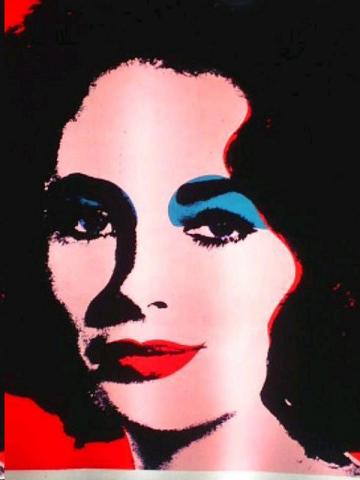Is Andy Warhol Dangerous?

There are few artists who can lay claim to as recognizable a body of work as Andy Warhol. Indeed, support for his legacy has emerged in all corners of the world making him an international superstar of the art world, rivaled perhaps only by Picasso. As a new bevy of collectors enter into the Postwar and Contemporary Art market, from the newly emergent BRIC countries (Brazil, Russia, India and China), Warhols are finding their way into homes all over the world. For many new art collectors looking to amass a respectable (and valuable) collection, Warhol has become a popular way to make a foray into the sometimes volatile world of art investment.
The art world has long been reluctant to openly embrace market speculation. Discussion of price has been the paramount taboo within the arts community and every effort has been made to obscure sales information. This sentiment is born out of the common practice among art galleries of keeping prices hidden from view. In spite of efforts to shy away from the “dirty” details of money, the art market has increasingly attracted speculators who are looking at Contemporary art as an attractive short-term investment.
The danger of shifting towards a view of art as an investment is that it is dissimilar in most ways to other markets. For one thing, art is incredibly illiquid -- the average work of art returns to the market every 30 years. Unlike shares in a company, which are bought and sold almost constantly, finding a buyer for a work of art is never a sure thing. An investor looking at the art market would have to consider how easily they could unload a work in the event that they wanted to sell.
Over the last couple of decades, the influx of speculators in the Contemporary art market has spurred an unprecedented inflation of prices. Each year new auction records are achieved for Contemporary art, and more often than not, it is Andy Warhol who is leading the charge. With staggering prices at auction, such as $71.7 million for Green Car Crash- Green Burning Car I at Christie’s New York in 2007, and $63.4 million for Men in Her Life at Phillips de Pury New York in 2010, Warhol has become an art market powerhouse. On the surface, one would assume that the success of the Warhol market in recent years is simply indicative of the artist’s acceptance as perhaps the pre-eminent artist of his generation. Though there is certainly no disputing Warhol’s importance in the art historical canon, the gaudy prices paid at auction are in fact somewhat misleading. Unlike other investment markets, there is little or no oversight within the art market. This lack of regulation has led to rampant and unapologetic insider trading.
In the particular case of the Warhol market, interested parties have taken to supporting the value of the artist’s work by buying it from each other at auction. Keenly aware that auction results are the only true public sales data that is available to appraisers and dealers alike, these interested parties (whose numbers are surprisingly few) ensure that the work sells for a price that either maintains the value of their current holdings or even increases it. What this amounts to is an artificial inflation of value within the Warhol market.
What is risky about this dynamic for investors looking to enter the market at these already astronomical prices is that there can be no assurance that the artificial support for this market will continue to effectively increase Warhol’s value in the future. For those who are buying the narrative that Warhol is deserving of these prices, the future may hold a surprise. Just as fast as values in the Warhol market have risen, they could fall back to a range that is seemingly more in touch with reality.
Underlying the future of Warhol’s market is the long-term relevance of his legacy. The collectors who have made Warhol’s work so sought after over the last two decades are likely to possess different tastes than the generation that follows them. It is hard to imagine that the iconographies favored by Warhol, the images of Liz Taylor, Mao Tse-tung or Elvis Presley, will resonate with a younger group of collectors. Will the hot pinks and greens in Warhol’s palette still carry the same cultural cachet two or three decades hence?
If young collectors cease to carry the torch of Warhol’s legacy, we will witness a free fall in not just the market for Andy Warhol’s work, but perhaps for the Postwar and Contemporary art markets at large. Last year Warhol sales alone accounted for some 17 percent of the total Contemporary art sales realized at auction. Any faltering from the current course, which expects to see Warhol investments appreciate, may be seen as a bellwether for the performance of the Contemporary art market in general. If buyers begin to lose confidence in Contemporary art as an investment, we may finally see prices return to the realm of normalcy at the cost of many people losing a lot of money.
Author Bio:
Eric Russ attended New York University where he received a Bachelor’s Degree in ‘The Sense of Self,’ an interdisciplinary investigation of human identity. He holds a Master’s Degree in Art Business from the Sotheby’s Institute of Art and is currently writing about the art world.
Image on the main page by Wally Gobetz





























































































































































































































































































































